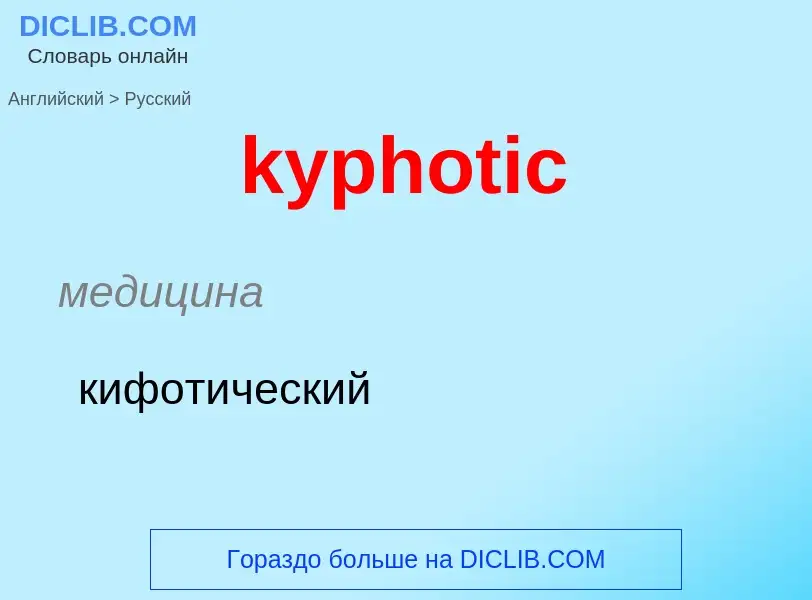Translation and analysis of words by ChatGPT artificial intelligence
On this page you can get a detailed analysis of a word or phrase, produced by the best artificial intelligence technology to date:
- how the word is used
- frequency of use
- it is used more often in oral or written speech
- word translation options
- usage examples (several phrases with translation)
- etymology
kyphotic - translation to russian
медицина
кифотический
[gi'bɔsiti]
медицина
горбатость
существительное
общая лексика
горб
горбатость
выступ
выпуклость
горбатость, горб
[kai'fəusis]
общая лексика
кифоз
медицина
горб
кифотическая деформация грудной клетки
существительное
медицина
кифоз
круглая спина
сгорбленность
Definition
Wikipedia

Kyphosis is an abnormally excessive convex curvature of the spine as it occurs in the thoracic and sacral regions. Abnormal inward concave lordotic curving of the cervical and lumbar regions of the spine is called lordosis. It can result from degenerative disc disease; developmental abnormalities, most commonly Scheuermann's disease; Copenhagen disease, osteoporosis with compression fractures of the vertebra; multiple myeloma; or trauma. A normal thoracic spine extends from the 1st thoracic to the 12th thoracic vertebra and should have a slight kyphotic angle, ranging from 20° to 45°. When the "roundness" of the upper spine increases past 45° it is called kyphosis or "hyperkyphosis". Scheuermann's kyphosis is the most classic form of hyperkyphosis and is the result of wedged vertebrae that develop during adolescence. The cause is not currently known and the condition appears to be multifactorial and is seen more frequently in males than females.
In the sense of a deformity, it is the pathological curving of the spine, where parts of the spinal column lose some or all of their lordotic profile. This causes a bowing of the back, seen as a slouching posture. Kyphosis is distinguished from scoliosis, a condition in which the spine has a sideways curve.
While most cases of kyphosis are mild and only require routine monitoring, serious cases can be debilitating. High degrees of kyphosis can cause severe pain and discomfort, breathing and digestion difficulties, cardiovascular irregularities, neurological compromise and, in the more severe cases, significantly shortened life spans. These types of high-end curves typically do not respond well to conservative treatment and almost always warrant spinal fusion surgery, which can restore the body's natural degree of curvature. The term is from Greek κυφός kyphos, a hump.



![Kyphosis (at far right) in comparison with other vertebral column disorders, including [[scoliosis]] and [[lordosis]] Kyphosis (at far right) in comparison with other vertebral column disorders, including [[scoliosis]] and [[lordosis]]](https://commons.wikimedia.org/wiki/Special:FilePath/Vertebral column disorders - Normal Scoliosis Lordosis Kyphosis -- Smart-Servier.jpg?width=200)


